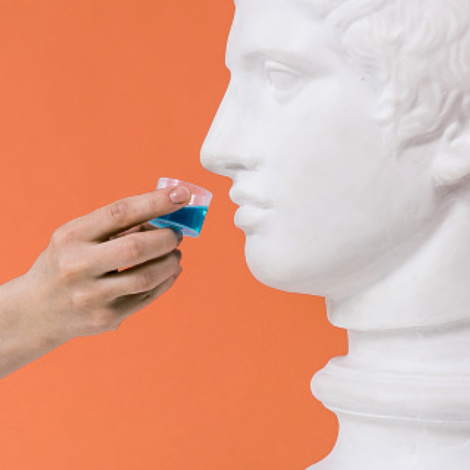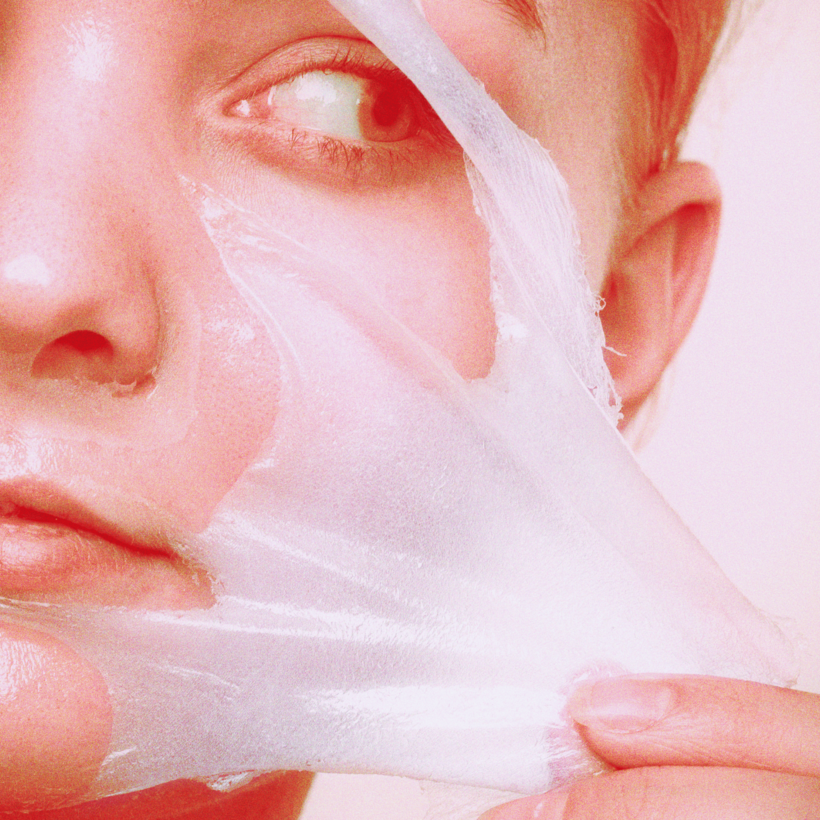Our pores have spent the past 15 years under increasingly intense scrutiny. We assault them with acids, lasers, specialized extraction tools, and other torture devices that wouldn’t be out of place in a Bond villain’s lair. The hope is not enhancement or care; it’s an effort at magic, making each pore disappear until it’s as imperceptible as it was the day we were born.
Recently, I’ve seen peel-off masks pop up on my TikTok feed, peddled breathlessly by glass-skinned nano-influencers. Pat McGrath introduced Glass 001 Artistry, a mask that mimics her viral porcelain-doll-makeup look from the Maison Margiela couture show. When Silver Mirror, one of my go-to facial spots in N.Y.C., released its Signature Facial Mask, just a few weeks ago, things seemed official. The peel-off mask is back.
But how are these new iterations different? Well, for one, they’re more expensive. They may include collagen, hyaluronic acid, peptides, A.H.A.’s, colloidal silver—all kinds of active ingredients you’d find in any other skin-care product but with the novelty of lizard cosplay.
Before this generation, the peel-off mask was far from sophisticated. I had a lineup of crude, walnut-shell scrubs; skin-suctioning bentonite clay; and pore strips modeled after the jaws of life in my medicine cabinet. A green tube of Freeman’s Cucumber Peel-Off Mask, less than $5 at the drugstore, had a place in most teenage girls’ bathrooms where I grew up. The Queen Helene Mint Julep Masque, also a cheap thrill, was a nightmare on towels, relegating it to second choice. It makes sense that the first time I tried a peel-off mask was, like so many firsts, at a sleepover where a friend promised that removing it was “fun.” That’s also the first time the words “beauty is pain” entered my brain. Pore torture.
Peel-off masks work similarly to a lint roller—if the lint roller were made of duct tape. You paint the clearish goop on your face and give it about 15 minutes to harden, at which point it will grab your dead skin, debris, and pore gunk in its clutches. For a removal tutorial, see Patrick Bateman in American Psycho. They seemed designed for masochists and skin pickers, if not actual psychopaths.
In the mid-2010s, GlamGlow made an empire out of peel-off masks, filling them with photogenic, if environmentally unfriendly, glitter, activated charcoal, and metallic finishes. None of us seemed to care what the masks actually did to the skin because their entertainment value was so high. Not so aestheticians and dermatologists, who decried peel-off masks as skin antagonists. (Irritating! Over-stripping! Barrier-destroying!) Today, GlamGlow, once a superstar, has almost disappeared from the market, producing only two masks and selling only on Amazon.
Of all the beauty products making their cyclical comeback, peel-off masks weren’t on my bingo card. But TikTok wore me down, and I tried Medicube’s Collagen Night Wrapping Mask and Silver Mirror’s Signature Facial Mask. I can see their appeal. (Sorry.) After each one, my skin looked airbrushed, and my pores had been sufficiently shrink-wrapped into invisibility. About an hour after yanking off the masks, though, the tightness evaporated, and my complexion appeared human once more. Now that I know where not to apply them (around the eyes, anywhere there’s hair), the experience is a lot smoother than it was at those slumber parties.
Nostalgia is a potent force in beauty today. That might explain the birth of NYX’s Face Glue Gripping Primer, which recalls the grade-school practice of covering your hand in Elmer’s glue and peeling it off for fun. Except this isn’t made to be removed. One Instagram ad shows someone Face Glue–ing her cheeks and sticking a contact-lens case and a pair of scissors on them. It’s hard to imagine why or when you’d need that kind of grip or what something that adhesive would do to your skin over time. But novelty knows no logic. Worst-case scenario, you can peel it off and be on your way.
Sable Yong is a beauty writer and a co-host of the podcast Smell Ya Later. She writes the Hard Feelings newsletter. Her essay collection, Die Hot with a Vengeance, was published by HarperCollins





